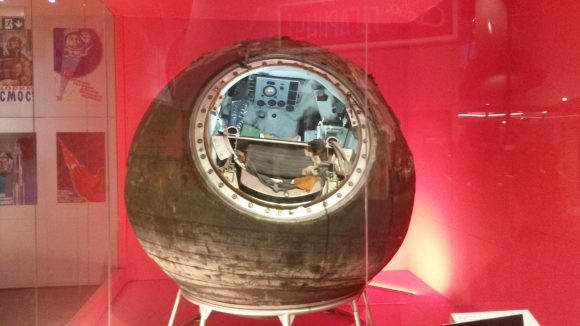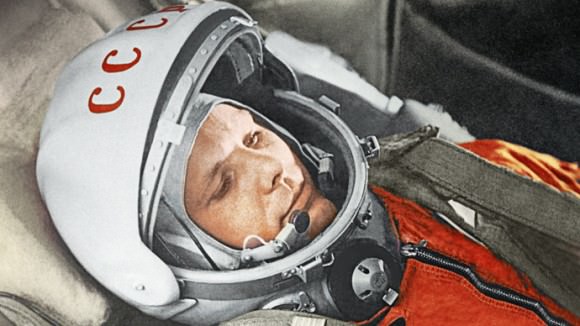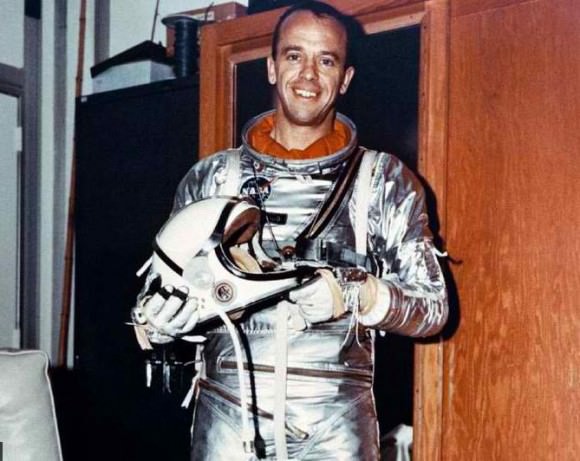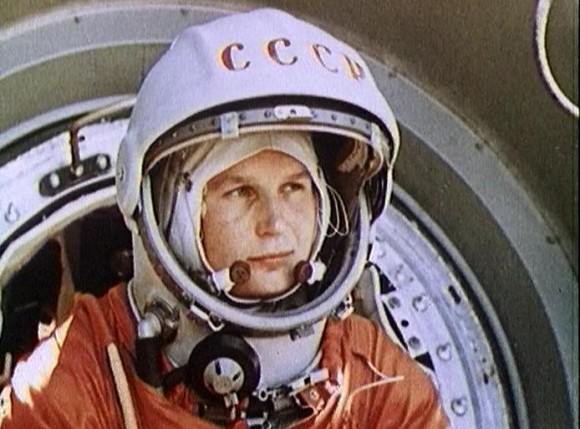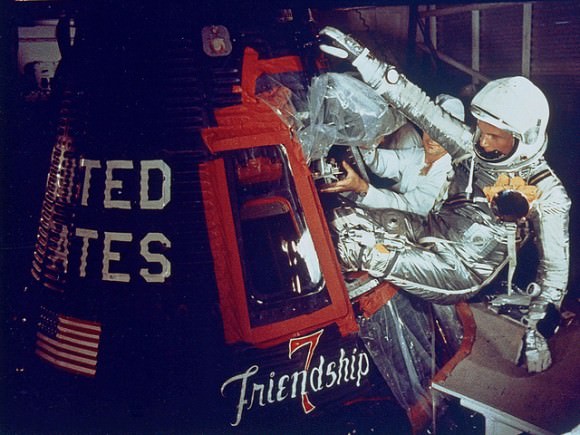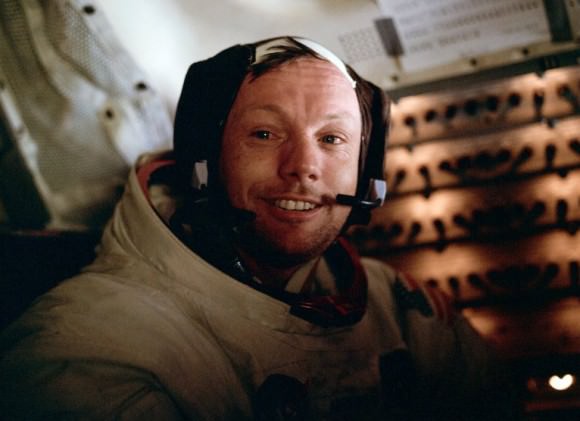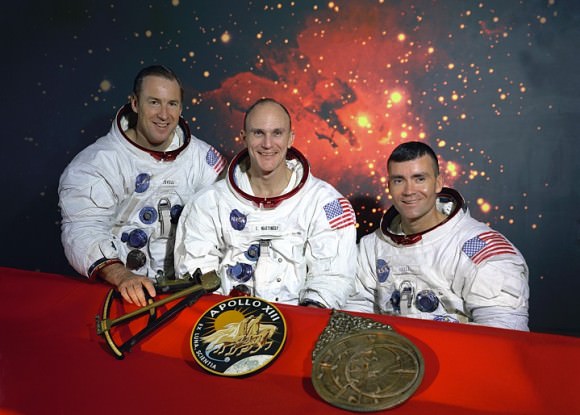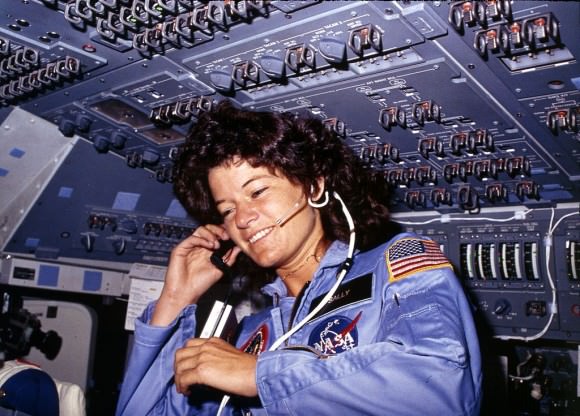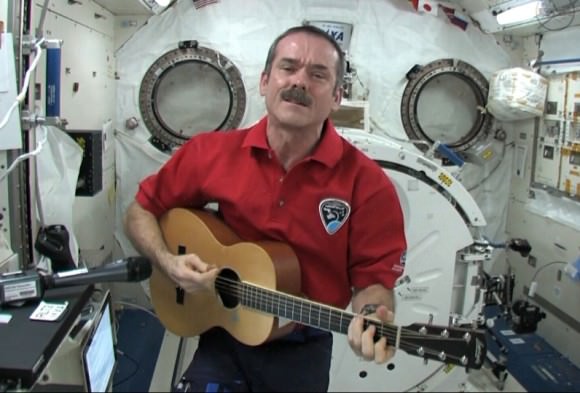When it comes to the “Space Race” of the 1960s, several names come to mind. Names like Chuck Yeager, Yuri Gagarin, Alan Shepard, and Neil Armstrong, but to name a few. These men were all pioneers, braving incredible odds and hazards in order to put a man into orbit, on the Moon, and bring humanity into the Space Age. But about the first women in space?
Were the challenges they faced any less real? Or were they even more difficult considering the fact that space travel – like many professions at the time – was still thought to be a “man’s game”? Well, the first woman to break this glass ceiling was Valentina Tereshkova, a Soviet Cosmonaut who has the distinction of being the first woman ever to go into space as part of the Vostok 6 mission.
Early Life:
Tereshkova was born in the village of Maslennikovo in central Russia (about 280 km north-east of Moscow) after her parents migrated from Belarus. Her father was a tractor driver and her mother worked in a textile plant. Her father became a tank officer and died during the Winter War (1939-1940) when the Soviet Union invaded Finland over a territorial dispute.
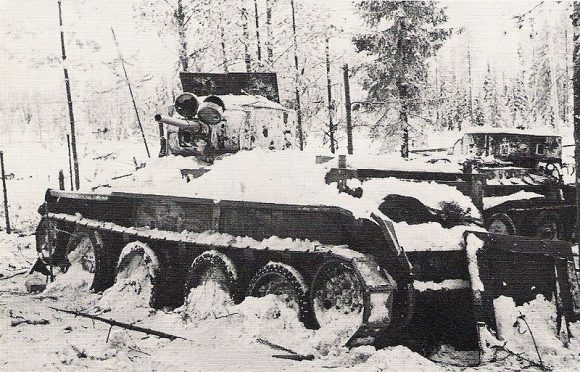
Between 1945 to 1953, Tereshkova went to school but dropped out when she was sixteen, and completed her education through correspondence. Following in her mother’s footsteps, she began working at a textile factory, where she remained until becoming part of the Soviet cosmonaut program.
She became interested in parachuting from a young age and trained in skydiving at the local Aeroclub. In 1959, at the age of 22, she made her first jump. It was her expertise in skydiving that led to her being selected as a cosmonaut candidate a few years later. In 1961, she became the secretary of the local Komsomol (Young Communist League) and later joined the Communist Party of the Soviet Union.
Vostok Program:
Much like Yuri Gagarin, Tereshkova took part in the Vostok program, which was the Soviet Unions’ first attempt at putting crewed missions into space. After the historic flight of Gagarin in 1961, Sergey Korolyov – the chief Soviet rocket engineer – proposed sending a female cosmonaut into space as well.
At the time, the Soviets believed that sending women into space would achieve a propaganda victory against the U.S., which maintained a policy of only using military and test pilots as astronauts. Though this policy did not specifically discriminate on the basis of gender, the lack of women combat and test pilots effectively excluded them from participating.
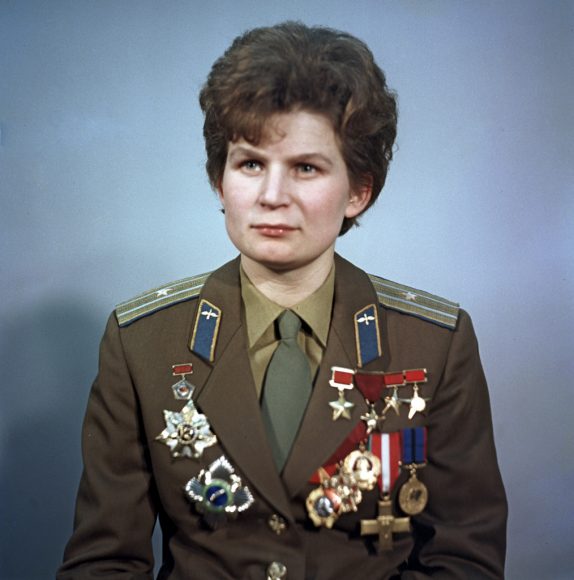
In April 1962, five women were chosen for the program out of hundreds of potential candidates. These included Tatyana Kuznetsova, Irina Solovyova, Zhanna Yorkina, Valentina Ponomaryova, and Valentina Tereshkova. In order to qualify, the women needed to be parachutists under 30 years of age, under 170 cm (5’7″) in height, and under 70 kg (154 lbs.) in weight.
Along with four colleagues, Tereshkova spent several months in training. This included weightless flights, isolation tests, centrifuge tests, rocket theory, spacecraft engineering, parachute jumps, and pilot training in jet aircraft. Their examinations concluded in November 1962, after which Tereshkova and Ponomaryova were considered the leading candidates.
A joint mission profile was developed that would see two women launched into space on separate Vostok missions in March or April of 1963. Tereshkova, then 25, was chosen to be the first woman to go into space, for multiple reasons. First, there was the fact that she conformed to the height and weight specifications to fit inside the relatively cramped Vostok module.
Second, she was a qualified parachutist, which given the nature of the Vostok space craft (the re-entry craft was incapable of landing) was absolutely essential. The third, and perhaps most important reason, was her strong “proletariat” and patriotic background, which was evident from her family’s work and the death of her father (Vladimir Tereshkova) during the Second World War.
Originally, the plan was for Tereshkova to launch first in the Vostok 5 ship while Ponomaryova would follow her into orbit in Vostok 6. However, this flight plan was altered in March 1963, with a male cosmonaut flying Vostok 5 while Tereshkova would fly aboard Vostok 6 in June 1963. After watching the successful launch of Vostok 5 on 14 June, Tereshkova (now 26) began final preparations for her own flight.
Launch:
Tereshkova’s Vostok 6 flight took place on the morning of June 16th, 1963. After performing communications and life support checks, she was sealed inside the capsule and the mission’s two-hour countdown began. The launch took place at 09:29:52 UTC with the rocket lifting off faultlessly from the Baikonur launchpad.
During the flight – which lasted for two days and 22 hours – Tereshkova orbited the Earth forty-eight times. Her flight took place only two days after Vostok 5 was launched, piloted by Valery Bykovsky, and orbited the Earth simultaneously with his craft. In the course of her flight, ground crews collected data on her body’s reaction to spaceflight.
Aside from some nausea (which she later claimed was due to poor food!) she maintained herself for the full three days. Like other cosmonauts on Vostok missions, she kept a flight log and took photographs of the horizon – which were later used to identify aerosol layers within the atmosphere – and manually oriented the spacecraft.
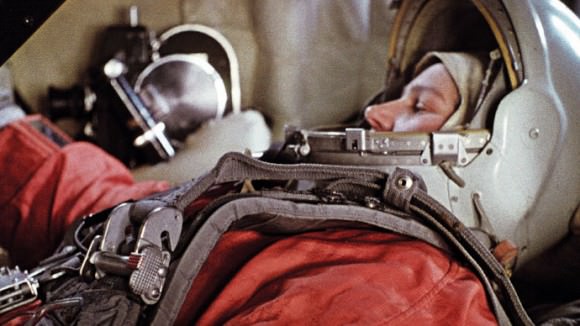
On the first day of her mission, she reported an error in the control program, which made the spaceship ascend from orbit instead of descending. The team on Earth provided Tereshkova with new data to enter into the descent program which corrected the problem. After completing 48 orbits, her craft began descending towards Earth.
Once the craft re-entered the atmosphere, Tereshkova ejected from the capsule and parachuted back to earth. She landed hard after a high wind blew her off course, which was fortunate since she was descending towards a lake at the time. However, the landing caused her to seriously bruise her face, and heavy makeup was needed for the public appearances that followed.
Vostok 6 would be the last of the Vostok missions, despite there being plans for further flights involving women cosmonauts. None of the other four in Tereshkova’s early group got a chance to fly, and, in October of 1969, the pioneering female cosmonaut group was dissolved. It would be 19 years before another woman would fly as part of the Soviet space program – Svetlana Savitskaya, who flew as part of the Soyuz T-7 mission.
After Vostok 6:
After returning home, certain elements within the Soviet Air Force attempted to discredit Tereshkova. There were those who said that she was drunk when she reported to the launch pad and was insubordinate while in orbit. These charges appeared to be related to the sickness she experienced while in space, and the fact that she issued corrections to the ground control team – which was apparently seen as a slight.
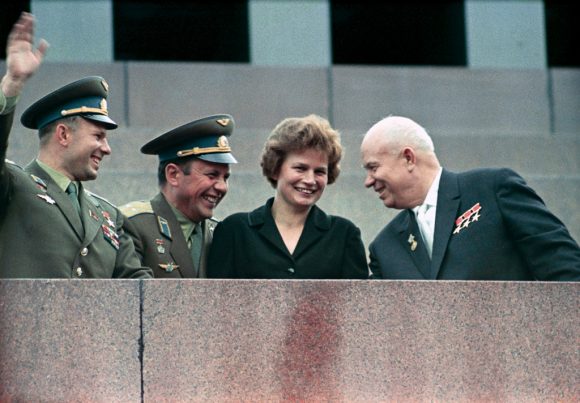
She was also accused of drunken and disorderly conduct when confronting a militia Captain in Gorkiy. However, General Nikolai Kamanin – the head of cosmonaut training in the Soviet space program at the time – defended Tereshkova’s character and dismissed her detractors instead. Tereshkova’s reputation remained unblemished and she went on to become a cosmonaut engineer and spent the rest of her life in key political positions.
In November of 1963, Tereshkova married Andrian Nikolayev, another Soviet cosmonaut, at a wedding that took place at the Moscow Wedding Palace. Khrushchev himself presided, with top government and space program leaders in attendance. In June of 1964, she gave birth to their daughter Elena Andrianovna Nikolaeva-Tereshkova, who became the first person in history to have both a mother and father who had traveled into space.
She and Nikolayev divorced in 1982, and Nikolayev died in 2004. She went on to remarry an orthopaedist named Yuliy G. Sharposhnikov, who died in 1999. After her historic flight, Tereshkova enrolled at the Zhukovsky Air Force Academy and graduated with distinction as a cosmonaut engineer. In 1977, she earned her doctorate in engineering.
Her fame as a cosmonaut also led to several key political positions. Between 1966 and 1974, she was a member of the Supreme Soviet of the Soviet Union. She was also a member of the Presidium of the Supreme Soviet from 1974 to 1989, and a Central Committee Member from 1969 to 1991. Her accomplishments also led to her becoming a representative of the Soviet Union abroad.
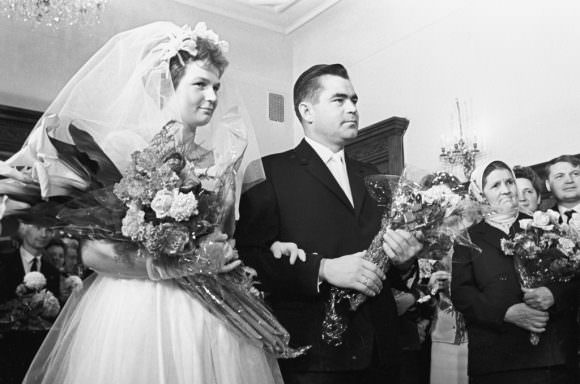
In addition to becoming a member of the World Peace Council in 1966, the vice president of the International Women’s Democratic Federation and president of the Soviet-Algerian Friendship Society. She also represented the Soviet Union at the UN Conference for the International Women’s Year in Mexico City in 1975 and led the Soviet delegation to the World Conference on Women in Copenhagen.
After the collapse of the Soviet Union, Tereshkova lost her political office but remained an important public figure. To this day, she is revered as a hero and a major contributor to the Russian space program. In 2011, she was elected to the State Duma (the lower house of the Russian legislature) where she continues to serve.
In 2008, Tereshkova was invited to Prime Minister Vladimir Putin’s residence in Novo-Ogaryovo for the celebration of her 70th birthday. In that same year, she became a torchbearer of the 2008 Summer Olympics torch relay in Saint Petersburg, Russia. She has also expressed interest in traveling to Mars, even if it were a one-way trip.
Legacy and Honors:
For her accomplishments, Tereshkova has received many honors and awards. She has been decorated with the Hero of the Soviet Union medal (the USSR’s highest award) as well as the Order of Lenin, the Order of the October Revolution, and many other medals.
Foreign governments have also awarded her with the Karl Marx Order, the Hero of Socialist Labor of Czechoslovakia, the Hero of Labor of Vietnam, the Hero of Mongolia, the UN Gold Medal of Peace, and the Simba International Women’s Movement Award. She has honorary citizenship in multiple cities from Bulgaria, Slovakia, Belarus and Mongolia in the east, to Switzerland, France, and the UK in the west.
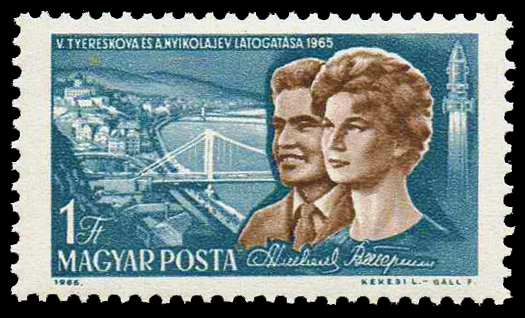
Due to her pioneering role in space exploration, a number of astronomical objects and features are named in her honor. For example, the Tereshkova crater on the far side of the Moon was named after her. The minor planet 1671 Chaika (which translates to “Seagull” in Russian) is named in honor of her Vostok 6 mission call sign.
Numerous monuments and statues have been erected in her honor and the Monument to the Conquerors of Space in Moscow features her image. Streets all across the former Soviet Union and Eastern Bloc nations were renamed in her honor, as was the school in Yaroslavl where she studied as a child. The Yaroslavl Planetarium, built in 2011, was created in her honor, and the Museum of V.V. Tereshkova – Cosmos exists near her native village of Maslennikovo.
The Space Age was a time of truly amazing accomplishments. Not only did astronauts like Tereshkova break the surly bonds of Earth, but they also demonstrated that space exploration knows no gender restrictions. And though it would be decades before people like Svetlana Savitskaya and Sally Ride would into space, Tereshkova will forever be remembered as the woman who blazed the trail for all female astronauts.
We have written many articles about Valentina Tereshkova for Universe Today. Here’s Who are the Most Famous Astronauts?, From Space to the Olympics, What is the Space Age?, Who was the First Man to go into Space?, Who was the First Dog to go into Space?, Who was the First Monkey to go into Space?, and How Many Dogs Have been into Space?
If you’d like more info on Valentina Tereshkova, check out NASA StarChild: Valentina Tereshkova, and here’s a link to NASA Imagine the Universe: First Women in Space.
Astronomy Cast also has some good episodes on the subject. Here’s Episode 124: Space Capsules. Part I – Vostok, Mercury and Gemini.
Sources:


